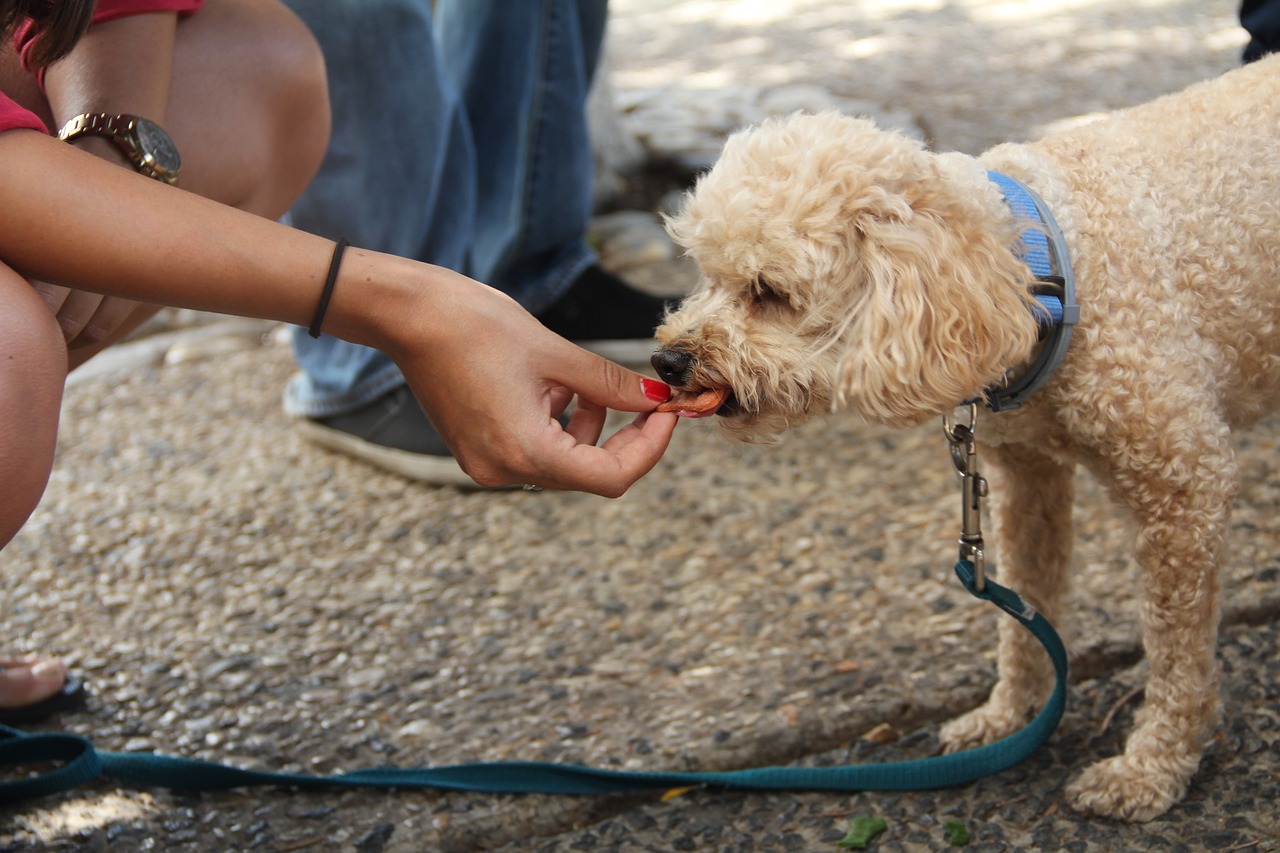Should I give my dog treats?
As a positive reinforcement trainer, the answer is a resounding YES! Treats can help our dogs bound to us, can calm them, and can be a wonderful way to tell them they did the right thing!
But let’s break it down further!
Snacks for dogs
Many people keep treats around and give them to their dogs because we enjoy seeing them get happy. Many of us will also give our dogs some leftovers when we are done with our meals.
If your dog is begging at the table and you give food from there sometimes, your dog will learn to beg. So if you want to provide a snack from what’s left on your plate, you may want to ask your dog to wait patiently until you clear the table.
Dogs do what works. And if begging works even some of the time, your dog will keep pestering you!
Training treats for dogs
Training treats should be TINY. As a dog trainer, I’m often surprised to see people giving even tiny dogs large chunks of food! Tiny pieces let you reward your dog often without risking obesity, belly aches and other issues.
For regular obedience work, you can cut dog jerky into tiny pieces or use small bits of cheese, chicken, or beef.
If your dog was interested in training but then loses interest, see if your dog wants some water. Some treats can be salty!
Is it ok for dogs to eat people food?
Many of us were raised to think that people food isn’t healthy for dogs. While there are a small number of foods that we can safely eat, but dogs can’t…the vast majority of things we eat are safe for dogs just like they’re safe for us.
When we want a side effect of an emotional reaction in dog training, we use soft, smelly people food. This is important for fear and aggression but we also should use it for training solid recalls. We want your dog to be wowed by treats when we are changing emotions!
And it’s okay to use soft, smelly people food for obedience too.
Kathy Sdao’s seminal book on dog training, encourages people to setup a bag of treats at the start of the day. Look for opportunities to catch your dog being good.
Any time the dog is doing something you like, give your dog a treat. Over time, you will see more and more of what you like in your dog.
Aim to empty the bag by the end of the day.
Behavior we reward, goes UP!
So if you see something you like, there’s no better way to say “good dog!” than with a delicious bit of food!
Enrichment and distraction treats
Dogs need opportunities to chew and lick.
When I put my dogs to bed, I give them a Toppl or a Kong filled with kibble and wet food. I think it helps them relax and get sleepy!
Bully sticks and Licki Mats are other ways to help dogs chill out on a mat or in a crate. They can also be a distraction if you want your dog to have some space from visitors.
Troubleshooting treat training for dogs
My dog won’t take treats.
Dogs that are healthy and emotionally comfortable should always take treats. Try offering your dog a freebie (don’t ask for any behavior) and see if your dog will take one.
Dogs that are emotionally over threshold won’t take treats.
Imagine if you were in a pit with rattlesnakes or about to head down a big roller coaster hill, and someone tried to give you pizza, fries, chocolate or your favorite food. You would not be motivated to eat!
So make sure your dog is feeling safe and not overwhelmed!
My dog won’t do what I ask if I don’t have food.
This complaint is legit. And the problem is fixable.
Dogs are really good at predicting things.
Pick up a leash. Yay! Walkies!
See a treat. “Hrm, sitting often gets me some of that! Let me try it!”
Sometimes dogs don’t really know what we want but they can make good guesses. And when you think your dog learned “sit”, your dog may have just made some good guesses based on seeing the treats.
We want to make sure the command is understood and the behavior predicts the treat!
So, reach for a treat or your treat pouch.
Your dog will look expectant but ignore those cute, pleading eyes!
Reach again. Nothing happens.
Wear your treat pouch around the house and don’t train.
Cut up treats and put them away.
Help your dog get clarity that the smell and sight of treats is not the thing that predicts getting them!
You may see some trainers holding their treat hand behind their back. This is to help them not show the dog the treat!
Troubleshooting this by blog post might not be easy…and it may warrant it’s own post or even a video. Leave a comment about whether your dogs have to see the treat to listen to you!
If you need help with your dog and you’re in the greater Sacramento area, sign up for a free 15 minute phone consultation.
